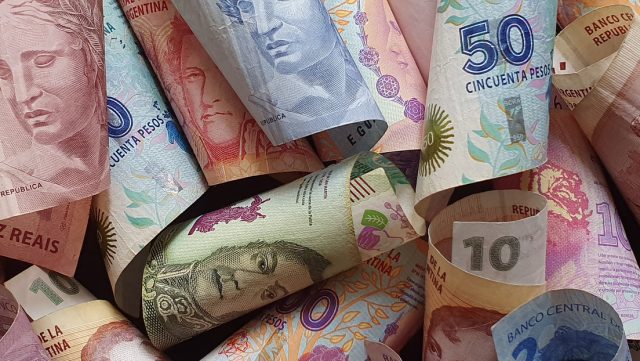The idea of creating a common currency for Latin America and the Caribbean is once again positioned as one of the most important issues on the regional economic agenda, especially since the president of the largest country in the bloc, Brazil, expressed that this project is necessary to cut the dependency on the dollar.
Although it is a long-term proposal, which has resonated in the continent for more than a decade from different visions, this time the project seems to gain more strength after the decision of Argentina and Brazil to start working on a unitary currency that will facilitate bilateral trade.
The issue has gained more importance, because the announcement by Presidents Luiz Inácio Lula da Silva, of Brazil, and Alberto Fernández, of Argentina, was made prior to the VII Summit of the Community of Latin American and Caribbean States (Celac), held in Buenos Aires, and the news has generated reactions both for and against, including Twitter owner Elon Musk, who said the move was «probably a good idea».
Lula commented on Monday that if the decision were his, he would prefer to favor foreign trade «always with the currency of other countries» so as not to depend on the dollar. «Why not try to create a common currency in the Mercosur countries [Common Market of the South], as they tried to do in the BRICS countries [Brazil, Russia, India, China and South Africa]?», said the Brazilian leader.
For Lula, the single currency proposal is a cross-cutting issue that must be built through a broad debate. He also believes the project could also impact the rest of the region, especially since there are countries with difficulties in maintaining a «balance with the dollar».
Regarding this, President Fernández said that although they still do not know how the initiative between Argentina and Brazil could work, much less how it would work for the rest of the region, there are certainties: the dependence that Latin America and the Caribbean have on the use of foreign currencies for trade and «how harmful» that is.
«If we don’t dare to change, we will continue to suffer the same ills», added Fernández, who sees deepening regional economic ties as a vital issue, because this could «motorize all of South America».Venezuela is ready for the currency
After learning about the project between Brazil and Argentina, the Venezuelan president, Nicolás Maduro, announced that his country is ready to work on that idea. «Venezuela is ready and we support the initiative to create a Latin American and Caribbean currency», said Maduro.
In addition, in his speech via teleconference at the VII Celac Summit, Maduro reiterated that he shares Lula’s proposal to start building a Latin American and Caribbean platform, which will materialize in a common currency and enable countries to share financial and monetary systems.
To achieve this, the president urged Celac to take «the first step» to walk towards that path, which allows the region to be «an independent and sovereign territory, where the self-determination of the peoples prevails».
«We must assume politics from big politics (…) respecting the specific policies, the political, economic and social models of each country, the political program of each leadership, of each Government, making a great exercise of tolerance, of inclusion, which will lead us to a true union», he said.
Maduro explained that the block has to achieve «complete, economic, commercial, financial and monetary integration», in an «irreversible way for the region», in order to stop the negative impact of the dollar.Mexico says no
The president of Mexico, Andrés Manuel López Obrador, also expressed his opinion on Tuesday about the proposal and announced that his country – the second largest economy in Latin America after Brazil – would not join the initiative, because they have “many reasons” to “continue keeping the dollar as a reference”.
However, the Mexican president admitted that he is unaware, for the moment, of the details of the proposal and expressed concern that it has been misrepresented to encourage tensions with the US.
López Obrador’s position is not new. Last January he also said that he did not agree, although he commented that «we would have to see» what Lula proposed about the regional currency.
“We are not proposing to replace the dollar”, López Obrador said on that occasion, and clarified that what Mexico is proposing “is the union of all the countries of America; Bolívar’s dream, but considering the United States and Canada», which – in his opinion – would make the continent stronger and would allow the region to be the «most important in the world».
For the Mexican president, economic integration should take into account the experience of the Treaty between Mexico, the US and Canada (T-MEC). However, he warned that to achieve this, inequality on the continent should be reduced and Washington’s «interventionist policy» towards the rest of the countries would have to change.At the moment: Argentina and Brazil
The first step for the common currency has already been formally taken by Argentina and Brazil, the two largest economies in South America, by placing project planning in the hands of their finance ministers.
In this regard, Lula explained that he hopes that the holders of the economic area portfolios and the presidents of the central banks may have «the necessary intelligence, competence and good sense» to make the leap towards this commitment that seeks to improve the commercial and financial relationship between the two countries.
Prior to the statements by Lula and Fernández, the Argentine Economy Minister, Sergio Massa, confirmed to the Financial Times that the common currency project would be carried out, accompanied by the Brazilian real and the Argentine peso, so that it could later be evaluated and offered to the rest of the region.
«It is the first step of a long road that Latin America must travel», said Massa of the project, which includes studying «from fiscal issues to the size of the economy and the role of central banks».
Massa added that, for now, it is not necessary to «create false expectations» and that the issue will most likely require an in-depth study of many years to materialize, as happened with the European Union, which waited 35 years to bring out the euro.
According to estimates by the Financial Times, the possible Latin American currency would represent 5% of world GDP. Currently, the strongest common currency is the euro, with almost 14% of global GDP.


